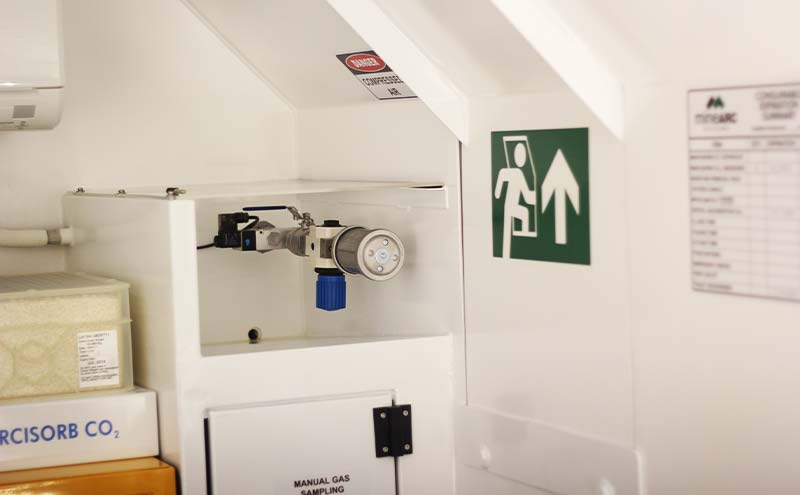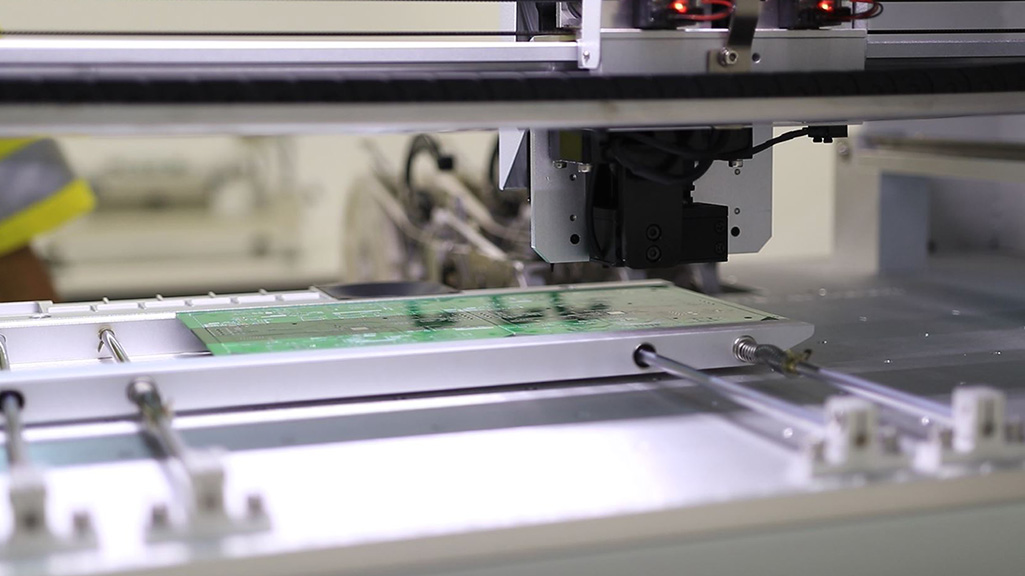MineARC Systems has been awarded the Global Safety Initiative of the Year accolade at the 2015 International ITA Awards for its new Compressed Air Management System (CAMS), explicitly designed for refuge chambers.
The ITA has recognised the Compressed Air Management System as an industry-leading solution to providing breathable, compressed air and maintaining a positive pressure within a refuge chamber. As such, reducing on-site running costs and improving operational safety and serviceability.
Compressed Air for Tunnel Refuge Chambers
As compressed air is the primary life support for survival in a refuge chamber during an emergency, it is essential that it is treated in order to be safely used for breathing purposes. Unlike most compressed air filtration systems, CAMS boasts an extensive list of features and benefits.
While traditional breathable air systems consist of a three-stage process, CAMS features a four-phase filtration method involving a water separator followed by preliminary, coalescing and absorption filters. This process ensures the air inside a refuge chamber is free from contaminants such as hydrocarbons, dust particles, moisture and oil.
Compressed Air Management in Tunnel Construction
One of the significant benefits of CAMS is its ability to manage compressed air flow to the refuge chamber. “One major expense on any industrial project is the electrical cost of running compressed air”, says Daragh Quinn, lead engineer in charge of the CAMS project. “To restrict the infiltration of smoke and other toxins, refuge chambers require positive pressure to remain emergency ready at all times. Over time, the cost of supplying continual compressed air to the chamber can be considerable.”
CAMS regulates the flow of air, emitting periodic bursts to maintain an internal pressure of 200pa. The more air inside creates a positive pressure seal, ensuring contaminants cannot enter the outside environment’s refuge chamber. Over a year, CAMS’s use resulted in significant operational cost savings and reduced wear and tear to on-site compressed air equipment.
CAMS has been third-party tested to prove its efficiency and economic savings during normal running conditions. Tests were conducted to measure compressor power consumption rates on MineARC Standard and Compact Design Refuge Chambers, both with and without CAMS. The results confirmed MineARC’s in-house testing.
Auto Safety Features of CAMS
A major feature of CAMS is a unique, integrated gas toxicity monitor with auto shut-off. “In a fire, there is a serious risk that carbon monoxide and other toxins can be drawn through the air line and into the emergency refuge chamber”, says Quinn. “The gas toxicity monitor activates a solenoid valve at the air intake, which automatically shuts off the compressed air if oxygen levels in the airline fall below 19%; signifying an offset which is caused by an increase in harmful gases entering the air line. Once activated the CAMS auto-shut off solenoid will remain closed for the remainder of entrapment, ensuring no toxins enter the chamber through the airline.”
Another feature of CAMS is the flood protector. Accidental flooding of a refuge chamber can often occur due to human error or excessive condensation from the compressor, causing catastrophic and costly damage to the interior of the chamber. In the event of water ingress to the compressed air line, the flood protection valve will seal closed preventing any water from entering the chamber. The water pressure will seal the valve shut until the water source is eliminated and the filter is drained.
Better Compressed Air Servicing
The final benefit of CAMS is the ease of service. In the harsh environment of heavy industry, traditional filter systems are subject to oxidisation and seizure. This effect can make filter change-over during service a problematic and time-consuming exercise.
Brad Whittaker, MineARC Service Manager, says, “MineARC’s unique click-in-click-out bayonet clipping system removes the need for traditional threaded rod elements and screw-in filter housings that can break due to wear and tear. This precision snap and lock design also reduce service time by up to 80%, which is a major advantage to our clients.”
The award-winning Compressed Air Management System is now standard on all new MineARC Refuge Chambers. It can also be retro-fitted to any existing permanent or portable chamber so that any industrial operation can capitalise on its many features and benefits.








